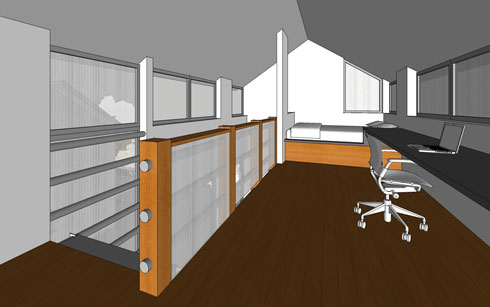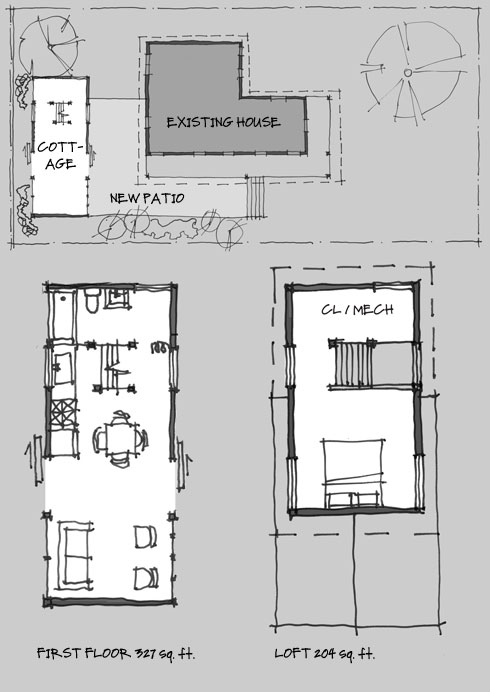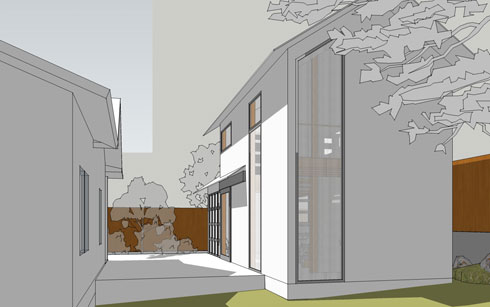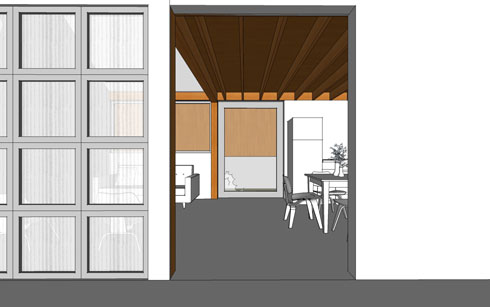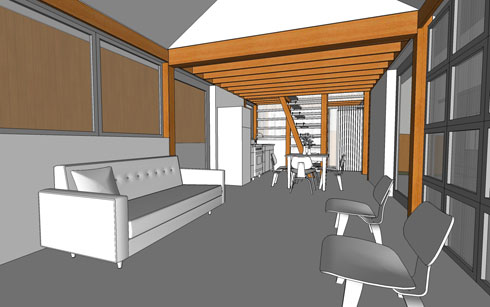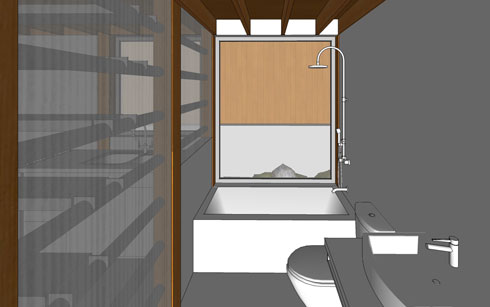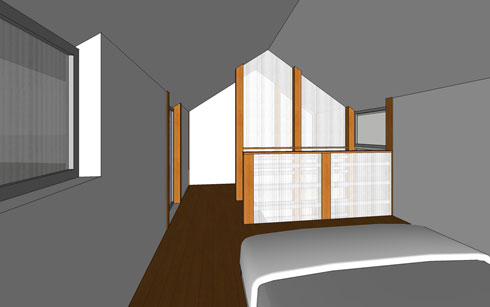In the fall, we started the design for a new house in Sand Point. Â Although the project stalled here in schematic design, we were very excited about the work, and hopefully it will come back in some form (we recycle!). Â Here are the three schematic designs we presented:
Scheme 1: Â PLUS
The clients wanted to have a 'permeable' house with soft transitions that welcomed neighbors but kept private space private. Â The design delineated the corner site into 4 quadrants with varying degrees of privacy. Â A manicured garden graces the stepped path from the very public corner, while the upper drive on the southwest provides the day to day family entrance (at grade for the client's aging parents. Â One the northeast, a wide terrace off the living spaces provides a great entertaining space that opens to the more quiet neighborhood edge. Â The two volumes of the plus create a very private backyard on the southeast.
The house has a very clean organization--living spaces are lined up in the lower volume, each with access to the eastern terrace/backyard, with the bedrooms stretched across the second story volume. Â The second story volume bridges over the first story, bookended with a mudroom and a semi-detached mother-in-law, creating two apertures--one for the entry, the second for an covered outdoor living room. Â At the intersection of the two volumes we have an atrium with a sculptural stair.




Scheme 2: Â HINGE
The second scheme is also addresses the clients' concerns about overwhelming the street, creating a private backyard, and blurring the edge between garden and house. Â The design features a low slung wood and glass box with a broad, planar green roof along the west edge of the site. Â A two story box, following the north site edge, contains the living room, media room and mother-in-law on the main floor, with bedrooms and a double studio/playroom above.

If the first scheme is PLUS, this one probably should have been nicknamed 'minus' because the overlap of the two volumes is subtracted to make a dramatic vertical space where the geometries interact. Â In the morning, light floods the kitchen. Â In the evening, the screened/glass wall on the western wall of the second story filters through to the living room:



Scheme 3: Â WING
The central idea of the WING scheme is two volumes--one private, one public--connected by a glass skinned entry, under a big angular roof. Â Again we're reinforcing the site's geometry to vary the degrees of privacy and expand the livable space of the house beyond the envelope with a series of outdoor spaces each with a unique character and function. Â At the corner, a terrace defined with a low seat wall, is the place for after dinner drinks, sunsets, and engaging with the neighbors. Toward the backyard, we have a perfect spot for baking in the summer sun, and a outdoor hangout/informal dining space with fireplace adjacent to the kitchen.




Of the three options, the clients' preference was PLUS. Â It has the strongest volumetric presence, an elemental simplicity and it handled the site issues and their program with sophistication and subtlety.
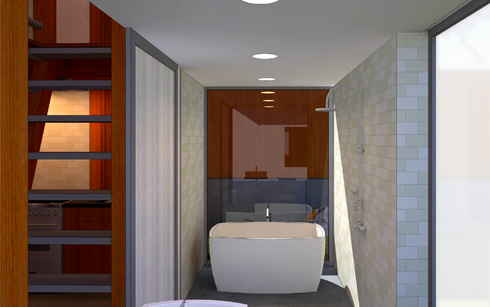 We've completed the second round of design on our CAST architecture case study backyard cottage.
We've completed the second round of design on our CAST architecture case study backyard cottage.



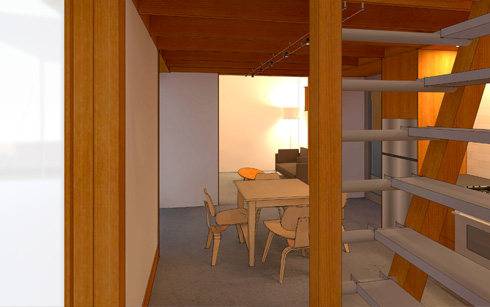
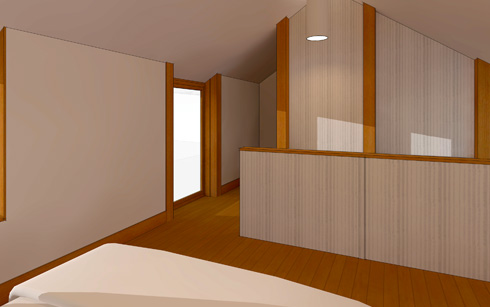

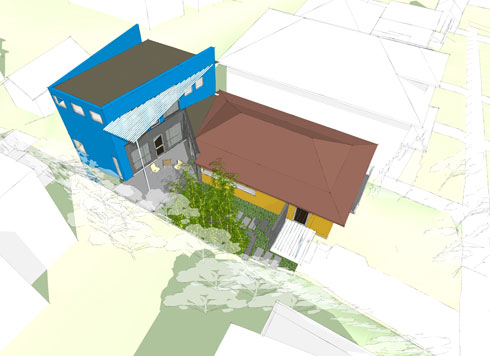 Here's another new project in the office, an addition to a residence on Capital Hill. The existing house is a tiny 750 sq. ft. bungalow on one of Seattle's steepest streets. The owners found the compact plan a perfect fit when they first moved in, but two kids later, they desperately need more room. They are drawn of the core values of modern architecture: emphasis on natural light, spaces that flow together, honest and straightforward materials and want a house that expresses that. They are comfortable making a pretty bold statement, but they also want the addition to feel comfortable in the existing fabric of the neighborhood. They are interested in sustainability that is designed in from the ground up, which led to the early decision to preserve the existing structure instead of starting from scratch on the site.
Here's another new project in the office, an addition to a residence on Capital Hill. The existing house is a tiny 750 sq. ft. bungalow on one of Seattle's steepest streets. The owners found the compact plan a perfect fit when they first moved in, but two kids later, they desperately need more room. They are drawn of the core values of modern architecture: emphasis on natural light, spaces that flow together, honest and straightforward materials and want a house that expresses that. They are comfortable making a pretty bold statement, but they also want the addition to feel comfortable in the existing fabric of the neighborhood. They are interested in sustainability that is designed in from the ground up, which led to the early decision to preserve the existing structure instead of starting from scratch on the site.















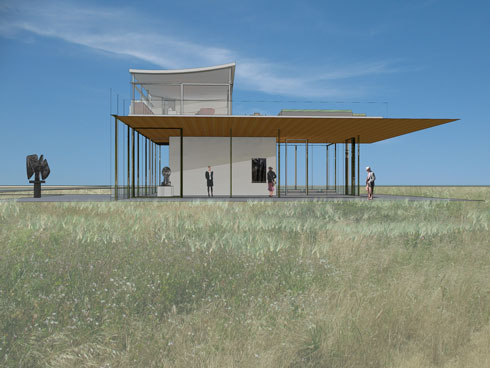


 We've seen an unexpected level of interest in backyard cottages in the 2 months since the new ordinance has been in effect. Perhaps the most interesting thing about the projects is the diversity of needs for each one...
We have a young couple with a small house on a large lot that would like an outbuilding with a workshop and guestroom. We have a couple planning to build and occupy a cottage in their backyard in order to open up their home for their children and grandchildren to live in. We have a third couple who have separated but are committed to raising their children together. They currently live in the same house and believe that adding a backyard cottage to the property will maintain the proximity they need to raise their children together while providing them the space they need as individuals.
We've seen an unexpected level of interest in backyard cottages in the 2 months since the new ordinance has been in effect. Perhaps the most interesting thing about the projects is the diversity of needs for each one...
We have a young couple with a small house on a large lot that would like an outbuilding with a workshop and guestroom. We have a couple planning to build and occupy a cottage in their backyard in order to open up their home for their children and grandchildren to live in. We have a third couple who have separated but are committed to raising their children together. They currently live in the same house and believe that adding a backyard cottage to the property will maintain the proximity they need to raise their children together while providing them the space they need as individuals. We've completed the first round of design on our CAST architecture case study backyard cottage.
We've completed the first round of design on our CAST architecture case study backyard cottage.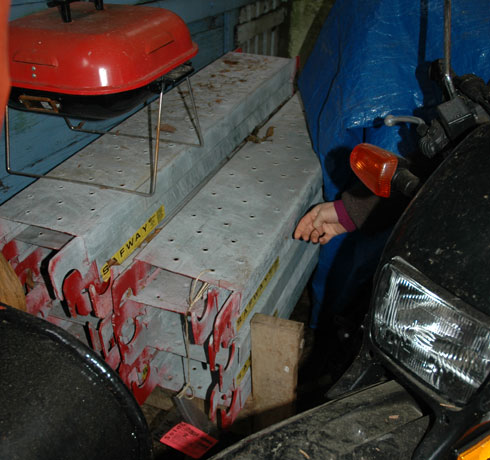
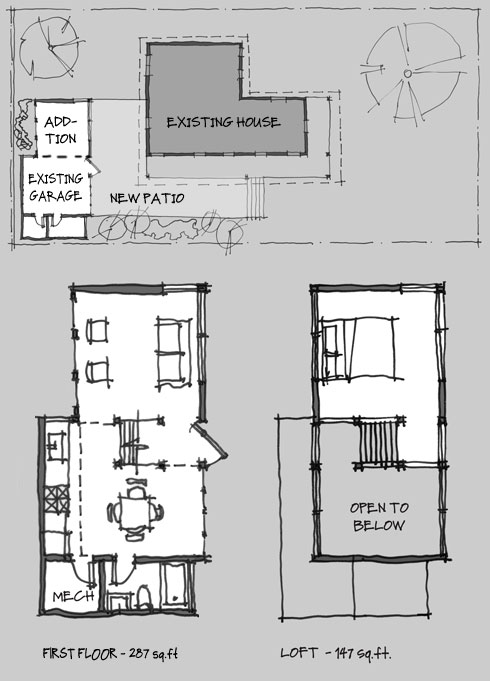



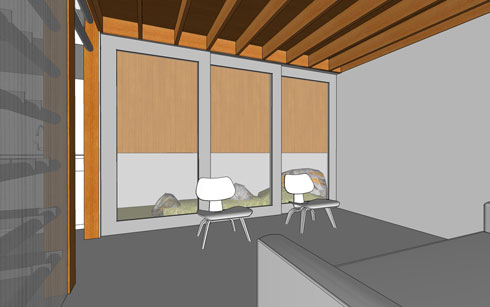
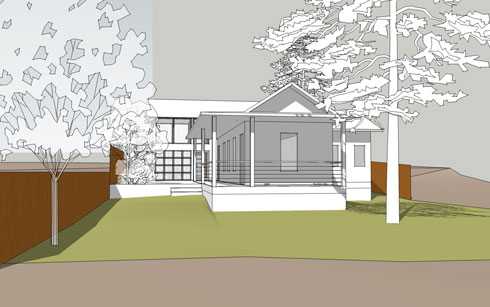
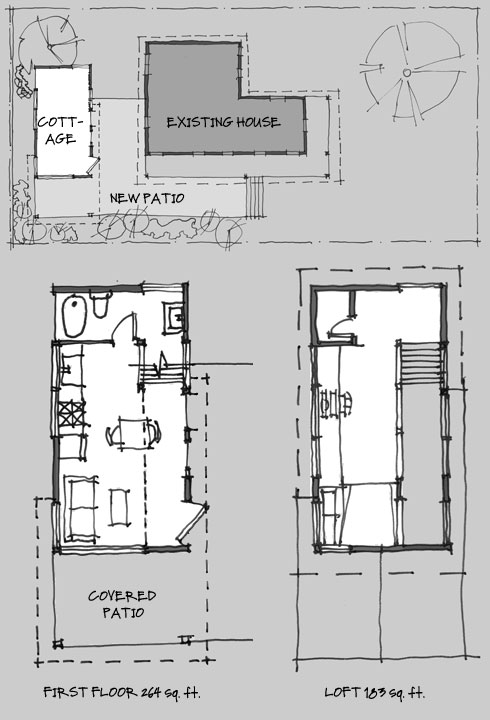
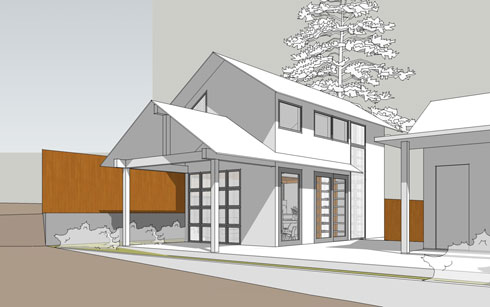 View from the SE
View from the SE
